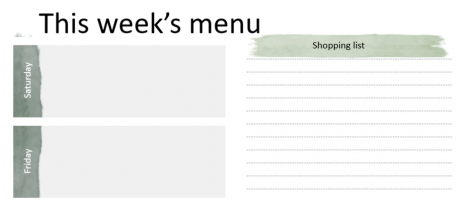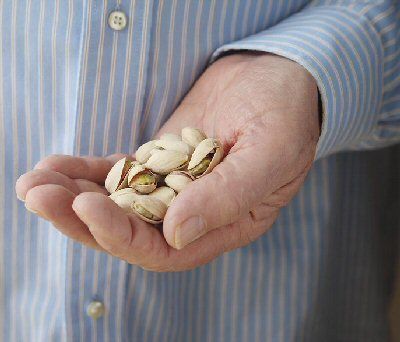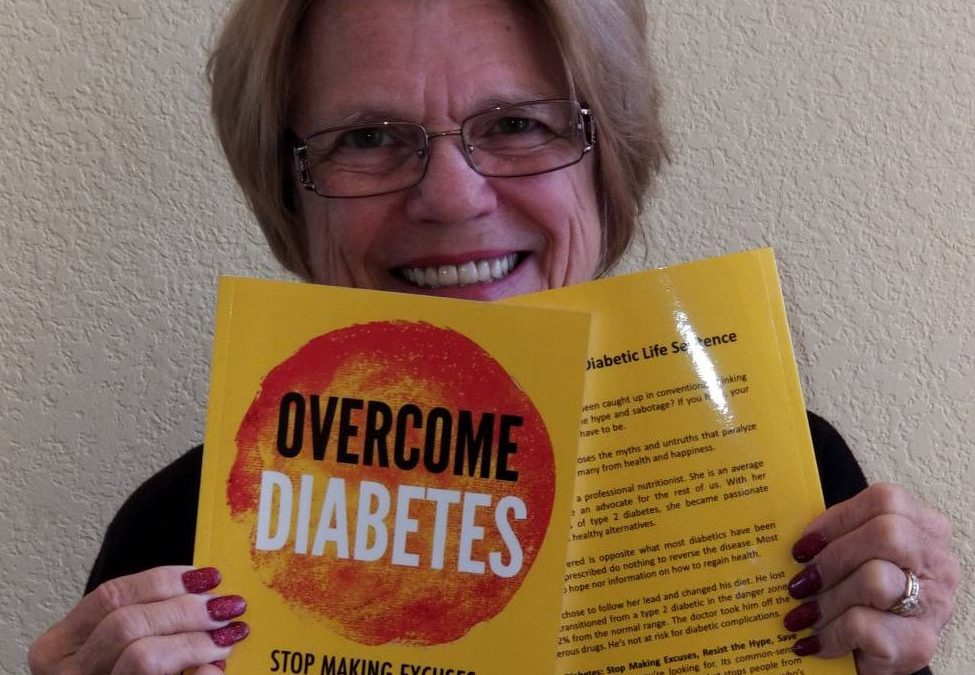
by Marian Hays | Health
Even if the idea of a detox doesn’t sound like much fun, you should check out these very real benefits, especially if you want to jumpstart better health.
With all the toxins that surround us daily, it’s important to consider detoxing our bodies. This is important for everyone, whether or not you are prediabetic or type2. You can jump-start cleansing your system to regain your best health.
Detoxification entails purifying the blood. It does this chiefly by getting rid of impurities from the blood in the liver, where toxins are refined for excretion. The body likewise eliminates toxins through the kidneys, bowels, lungs, lymph, and skin. When this system is compromised, impurities are not properly filtrated and every cell in the body is adversely affected.
If a detox will help you jumpstart healthy eating or even weight loss, then you should consider doing it. It should help your body’s natural cleansing process by:
1) Giving organs a rest with modified fasting
2) Getting the liver to push toxins from the body
3) Raising elimination through the bowels, kidneys, and skin
4) Improving the circulation of the blood
5) Refueling the body with sound nutrients
Eliminate foods that cause toxicity in the first place. Some doctors suggest a specific, planned detox at least once a year. Some toxins are released through perspiration. If you have access to a sauna, use it to flush toxins out of the body.
During a detox, eliminate alcohol, coffee, tobacco, sugars and concentrated fats which act as toxins in the system. Increase the amount of water that you drink to help flush the toxins. You aren’t doing a complete food-fast. You are only fasting from foods that harm you.
Minimize the use of chemical-based house cleaners and personal healthcare products and replace with organic alternatives. This is wise with or without a detox. Most antiperspirants, for example, add aluminum, which is toxic. Products that add fragrance are adding toxins into your body. The term “fragrance” includes about a thousand different chemical product options. You won’t know which ones since government regulations only require the product label to list the word “fragrance.”
Length of detoxing varies but is usually 3-5 days. If you have diabetes to consider, you might think in terms of 2-3 days, or whatever your doctor deems safe. Check with your medical professional for what you specifically can do. You still need to consume the proper nutrients to keep your blood sugar in the proper range. If you’re up for it and your doctor agrees, try veggie smoothies so you maintain a liquid type diet for a couple of days. This lets your systems rest, but you still get the nutrients you need.
You should feel so much better with the liquid version or small intentional meals. Your numbers might dip into the lower range because your body doesn’t need as much of the medications you are taking. Again, be sure you are working with your doctor and not self-diagnosing when it comes to your meds.
Continue to eat clean and healthy after a detox, which should keep your glucose levels in a proper range. If they dip lower, it could indicate you don’t need as much medication. Your doctor may even start weaning you off the meds.
There are safe detox plans such as veggie juices and some clear fruit juices, like apple and cranberry juice. Be cautious with fruit juices as they are much higher in sugar than vegetables, but they do let your digestive system rest. Avoid orange juice during a detox or fast, since it is so high in sugar. If you purchase detox drinks, make sure they’re organic, cold pressed and not from concentrate.
After a detox program, you should be able to keep your body toxin free through diet, supplements and lifestyle changes which help you reach an ideal weight and reboot your health.
I believe the importance of a detox is in what you don’t eat: no sugar, flour, rice, potatoes, and none of the carbs that you’re detoxing. If you suspect allergies, then you’ll want to eliminate those possible offenders as well.
Once detoxed, you can start adding some eliminated foods back into your diet, but not all at once. If something eliminated is a toxic food for you, you want to know what it is without masking it with everything else.
I hope you’ll give it a try! Be sure to read my next post on How and Why to Do a Mental Detox.
Marian Hays writes, coaches, and speaks about health and personal growth for people who want to take control of their health and empower their lifestyle. She’s an advocate for others as she researches and shares the truth instead of hype, infused with humor. Her goal is to inspire others to accomplish their goals and work through challenges that might otherwise hold them back. You can find her books on Amazon.

by Marian Hays | Health
Meal planning is essential to a successful healthy diet. It will prevent grabbing something that you probably shouldn’t be eating when you don’t have anything planned for dinner. If it’s a quick snack to hold you over until the meal, at least it should be a wise choice. A plan helps you to stock up on healthy options.
- The planning should begin before you head to the grocery store. Once a week sit down and create a menu plan for the meals you are going to make for the next week. Include all meals and snacks for each day. Include raw veggies for snacks, such as bell peppers, celery, cucumbers, broccoli, and cauliflower.
- Then prepare a list of the ingredients you need for your week’s pre-planned meals. Shop from the list to prevent “oh, that looks good” i
 mpulse buying. You can use a digital program to have it handy on your phone or tablet. We’ve used Wunderlist, Todoist, and others to build our lists. When we add the item to the cart, we check it off and it drops into the completed list. Then when we need it again, we scroll down and uncheck it so it goes back to the active shopping list.
mpulse buying. You can use a digital program to have it handy on your phone or tablet. We’ve used Wunderlist, Todoist, and others to build our lists. When we add the item to the cart, we check it off and it drops into the completed list. Then when we need it again, we scroll down and uncheck it so it goes back to the active shopping list.
- In the beginning, meal planning will take some time. Once you get the first week or two done, it will get easier and take less time. You might even decide that you’ll come up with 2 weeks of variety and then duplicate those 2 weeks as many times as you wish. If you are no longer using that menu plan, file it for later. When you need to come up with menu ideas and you are short on time or ideas, pull out the tried and true menu and you’re all set.
- If you’re following a specific diet such as Paleo, Carb counting, the TLC Diet, or Omni diet, you’ll need to know what foods you can have, the portion sizes and how they can be cooked. If you are not following a specific diet plan, then be sure you know what foods are best. While specifically targeting diabetics, my book Overcome Diabetes has detailed information that applies to healthy meal plans for everyone. Plan your meals around those.
The short version: eat more veggies, eliminate sugar and simple carbs, eat more whole foods.
- Plan each day out in its entirety. Make it realistic. Don’t plan to make a meal that requires a lot of prep/cook time on a night that you know you won’t be home until late. Save the meals with more preparation for when you have time and make extra so you can have left-overs. If you are going to do this, you can plan the left-overs into the week’s menu.
- Don’t go to the grocery store when you are hungry. If you do, there is more chance that you will buy food that you do not need. As you’re pushing around the cart, only get what is on your list. Skip the aisles that don’t have something on the list (cuts down on temptation.)
- Before you get in line to pay for your food, make sure nothing jumped into your cart that you shouldn’t have. Put it back. My husband sometimes puts things like cookies into the cart to see how long it will take me to notice. Not very long 🙂
These 7 tips will make sure you stick to your meal plan and save you money too.
We’ve followed two specific diets in the past. Now we follow the wise choice foods listed in my book. These foods have become a habit. If my husband goes to the store to replenish supplies, I know he’ll come home with good choices from our shared digital list. There are times when we splurge, but we know that’s what it is – a one-time splurge.
To your health!
Marian Hays writes, coaches, and speaks about health and personal growth for people who want to take control of their health and empower their lifestyle. She’s an advocate for others as she researches and shares the truth instead of hype, infused with humor. Her goal is to inspire others to accomplish their goals and work through challenges that might otherwise hold them back. You can find her books on Amazon.

by Marian Hays | Health
An article published 7 years ago in the Harvard Gazette details how diabetes and obesity are parallel epidemics. Medications for diabetes lead to obesity. Obesity leads to diabetes. Studies have been going on “for decades” but no one was taking them seriously. Only now, seven full years later, is the parallel between the two getting any attention. This delay means about 30 percent of overweight people have the disease, and 85 percent of diabetics are overweight.
From the now 7 year old article:
“The twin epidemics of obesity and its cousin, diabetes, have been the target of numerous studies at Harvard and its affiliated hospitals and institutions. Among seminal findings was the first study to document the extraordinarily tight connection between the two diseases. Research done by Harvard School of Public Health Professor Walter Willett and his colleagues showed that being even slightly overweight increased diabetes risk five times, and being seriously obese increased it 60 times. ”
As reported in the Harvard Gazette article, “The study’s authors had to push just to get the results in print.
“We had a hard time getting the first paper published showing that even slight overweight greatly increased the risk of diabetes,” Willett said. “They didn’t believe it.”
There is so much we can do to reverse this in our own lives. It’s time to take action!
Source: https://news.harvard.edu/gazette/story/2012/03/the-big-setup/

by Marian Hays | Health
I came across an interesting article about the health benefits of eating nuts. A study shows how eating a handful of nuts daily is helpful in preventing prediabetes and helps stabilize type 2 diabetics. Eating nuts as a snack instead of many typical snacks such as granola bars or yogurt.
“According to researchers from Pennsylvania State University, eating an average of 52 grams of nuts a day can reduce the likelihood of developing insulin resistance, a precursor to type 2 diabetes. It’s estimated that up to 50 percent of people with insulin resistance will develop diabetes if they don’t make lifestyle changes.
“Previous studies have suggested that eating nuts regularly is tied to better blood glucose (sugar) control and protection from type 2 diabetes. The new findings suggest that adding nuts to your daily diet can help improve insulin sensitivity.
“Nuts are high in healthy unsaturated fats, fats thought to help improve insulin sensitivity. Dietary fiber and magnesium in nuts may also play a role.
“Pistachios and walnuts are a good source of alpha linolenic acid (ALA), an omega-3 fatty acid linked to protection from type 2 diabetes.
“52 grams of nuts, the average daily intake across the 40 studies, is equivalent to 300 calories worth of almonds (43 nuts), 340 calories of walnuts (26 halves) or 290 calories of pistachios (74 kernels).
“To prevent adding excess calories to your diet, swap nuts for snacks such as granola bars, crackers, cookies and chips. Substitute nuts for granola as a topping on yogurt. Replace meat in stir-fries with nuts, which, in addition to unsaturated fat and fiber, add plant-based protein.”
Excerpts from an article by Leslie Beck, a Toronto-based private practice dietitian, Director of Food and Nutrition at Medcan. https://www.theglobeandmail.com/life/health-and-fitness/article-everything-you-need-to-know-about-eating-nuts-and-preventing-diabetes/

by Marian Hays | Health
Today’s news article Buffett Set to Lose $4B as Kraft Heinz Stock Tanks explains the Kraft Heinz dramatic valuation and stock losses. It states the losses are due in part to shifting consumer buying trends. There’s a growing awareness that we need to eat more natural foods and less processed foods. The following is part of the news article (emphasis in bold is mine):
“Kraft Heinz Co. plummeted the most on record Friday, one day after writing down the value of some of its best-known brands by $15.4 billion, an acknowledgment that changing consumer tastes have destroyed the value of some of the company’s most iconic products.
“The packaged-food giant’s charge to reduce the goodwill value of the Kraft and Oscar Mayer trademarks and other assets came with disappointing fourth-quarter earnings and … a net loss of $12.6 billion, or $10.34 a share…
“Kraft Heinz’s portfolio plays mainly in the center of the grocery store, an area hit hard by secular shifts in eating and shopping habits, and the one at greatest risk of being disrupted by Amazon.com Inc.
“As a result, Buffett reportedly stands to lose more than $4 billion in a single day because of the carnage in the stock of the Chicago packaged food giant (KHC), whose products include Heinz Tomato Ketchup, Jell-O and Kraft Macaroni & Cheese and. …competes with General Mills and Kellogg Co.”
Read Newsmax: Kraft Heinz Discloses SEC Probe, $15 Bln Write-down; Shares Dive 20 Pct | Newsmax.com

by Marian Hays | Health
I was interviewed on the Indie Beacon Radio about my books, Diabetes Diet Options, and Overcome Diabetes. You can see the interview on Marian Hays YouTube channel If you have questions, comments or would like more information, send an email to marian@cspress.io I will answer every email!
As my special thank you, download my 34-page free report at http://regaingreathealth.com/3steps


 mpulse buying. You can use a digital program to have it handy on your phone or tablet. We’ve used Wunderlist, Todoist, and others to build our lists. When we add the item to the cart, we check it off and it drops into the completed list. Then when we need it again, we scroll down and uncheck it so it goes back to the active shopping list.
mpulse buying. You can use a digital program to have it handy on your phone or tablet. We’ve used Wunderlist, Todoist, and others to build our lists. When we add the item to the cart, we check it off and it drops into the completed list. Then when we need it again, we scroll down and uncheck it so it goes back to the active shopping list.


